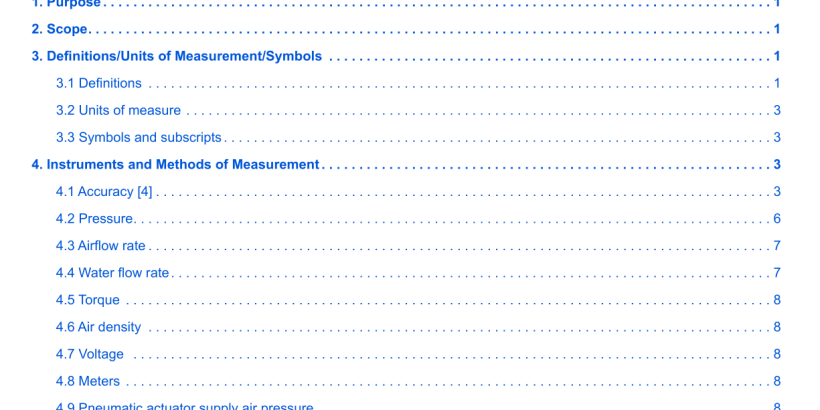ANSI AMCA 500-L-2015 pdf download.Laboratory Methods of Testing Louvers for Rating
3.2.1 System of units
SI units (The International System of Units, Le Systéme International d’Unités) [1] are the primary units employed in this standard, with I-P units (inch-pound) given as the secondary reference. SI units are based on the fundamental values of the International Bureau of Weights and Measures [1], and I-P values are based on the values of the National Institute of Standards and Technology, which are in turn based on the values of the International Bureau.
3.2.2 Basic units
The SI unit of length is the meter (m) or the millimeter (mm); the I-P unit of length is the foot (ft) or the inch (in.). The SI unit of mass is the kilogram (kg); the I-P unit of mass is the pound-mass (lbm). The SI unit of mass fow rate is the kilo- gram per second (kg/s); the I-P unit of mass fow rate is the pound-mass per second (lbm/s). The unit of time is either the minute (min) or the second (s). The SI unit of temperature is either the degree Celsius (°C) or the degree kelvin (°K); the I-P unit of temperature is either the degree Fahrenheit (°F) or the degree Rankine (°R). The SI unit of force is the newton (N); the I-P unit of force is the pound force (lbf).
4.2 Pressure
The total pressure at a point shall be measured on an indica- tor, such as a manometer, with one leg open to atmosphere and the other leg connected to a total pressure sensor, such as a total pressure tube or the impact tap of a pitot-static tube. The static pressure at a point shall be measured on an indicator, such as a manometer, with one leg open to the atmosphere and the other leg connected to a static pressure sensor, such as a static pressure tap or the static tap of a pitot-static tube. The velocity pressure at a point shall be measured on an indicator, such as a manometer, with one leg connected to a total pressure sensor, such as the impact tap of a pitot-static tube and the other leg connected to a static pressure sensor, such as the static tap of the same pitot-static tube. The diferential pressure between two points shall be measured on an indicator, such as a manom- eter, with one leg connected to the upstream sensor, such as a static pressure tap, and the other leg connected to the downstream sensor, such as a static pressure tap.
4.2.1.2 Averaging
Since the airfow and pressures through a louver in a typi- cal system are never strictly steady, the pressure indicated on any instrument will fuctuate with time. In order to obtain a representative reading, either the instrument must be damped or the readings must be averaged in a suitable manner. Multipoint or continuous record averaging can be accomplished with instruments and analyzers designed for this purpose.
4.2.3.3 Piezometer rings
Piezometer rings are specifed for upstream and down- stream nozzle taps and for outlet duct or chamber measure- ments unless pitot traverse is specifed. Measuring planes shall be located as shown in the test fgure for the appropri- ate setup.
4.2.4 Other pressure-indicating instruments
Pressure measuring systems consisting of indicators and sensors other than manometers and pitot-static tubes or static pressure taps may be used if the combined uncertainty of the system including any transducers does not exceed the combined uncertainty for an appropriate combination of manometers and pitot-static tubes or static pressure taps.ANSI AMCA 500-L-2015 pdf download
